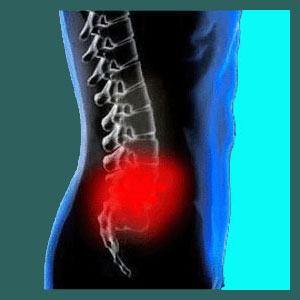
Should you use heat or ice for sacroiliac pain? Which treatment will work better to relieve pain? Will either heat or ice be effective at minimizing the symptoms of sacroiliac joint pain? These are all common questions that we receive on the various sites of The Cure Back Pain Network and specifically on Sacroiliac-Joint-Pain.Org.
Heat and ice are mainstays of home treatment for many types of musculoskeletal pain. They span the historic medical record all the way to the beginning of recorded time and continue to play important roles today in modern healthcare.
This essay details the best uses of heat and ice for sacroiliac joint symptoms. We will explore both home care and professional therapeutic applications of both treatments.
Heat or Ice for Sacroiliac Pain at Home
Heat and ice can both be utilized at home for treating pain, superficial inflammation and related symptomology. Best of all, heat and ice come in many safe and convenient forms for home treatment:
Hot or cold showers and baths can be used to provide all over relief from various types of pain. Similarly, a wet compress of hot or cold can be used to limit exposure to the therapy and concentrate benefits into a smaller area of the body.
Ice can be wrapped in a towel and applied directly to the painful area. Ice should be kept on no more than 20 minutes at a time with many doctors reporting that 10 to 15 minutes is ideal. Ice can be repeatedly used as needed throughout the day or night to provide safe relief.
Heating pads or hot compresses can be used on the painful area. Once again, 10 to 20 minutes on is sufficient for each application.
Topical pain relief products can simulate the cooling effects of ice or the warming stimulation of het using chemical, pharmaceutical or herbal ingredients. Many of these products actually use the words ice or heat in their names.
Swimming, or relaxing in a very cold or warm pool, hottub, spa, spring or organic body of water, can act as a simple form of ice or heat therapy if the temperature is correct.
Heat or Ice in Professional Care
When utilized professionally, heat and ice are most often known by their respective scientific names diathermy and cryotherapy. Don’t let the fancy terminology fool you; the idea behind treatment is identical to the most basic forms of heat and ice therapy…
Diathermy can be applied using heating elements of various types, including pads, topical products or wave technologies. Many diathermy treatments can penetrate much deeper into tissue than home use heat and ice therapies. Some of these professional tools can be applied directly into painful parts of the joint for a specific purpose, such as relaxation, anti-inflammation or pain relief.
Both heat and ice therapy can be utilized as part of a surgical endeavor as well, either as long-term symptomatic care in the form of nerve ablation or to accomplish a particular surgical goal. Both methods of care can be very effective when applied by an expert in sacroiliac joint surgery.
Heat or Ice for Sacroiliac Pain Factsheet
Heat and ice are some of the oldest healthcare treatments known to mankind. Both have been used since the dawn of history to treat pain, disease and provide relief for many health ills.
When used as indicated and with common sense, ice and heat can be very effective at reducing some types of symptoms without having to rely on dangerous forms of symptomatic care like injections and toxic oral route drugs.
The question of whether to use ice or heat depends much on the preferences of the patients and the primary therapeutic goal. Ice is excellent to relieve inflammation and numb pain. Ice can have lasting effects when used over long timelines to combat inflammation within the joint. Meanwhile, heat can speed healing, increase circulation, combat stiffness and also relieve pain. Heat has fewer lasting benefits, but can be very effective at providing immediate short term relief for many painful expressions in and around the joint.
Sacroiliac Joint Pain > Sacroiliac Treatment > Heat or Ice for Sacroiliac Pain





